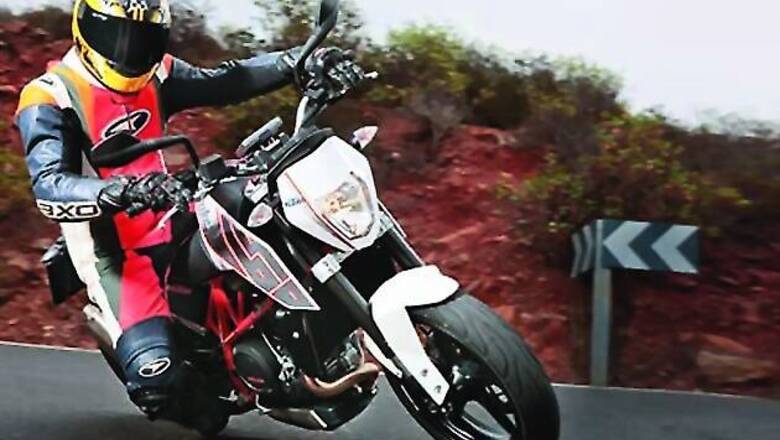
views
I'm completely out of my depth in this environment. I'm so far out of my depth I'm wondering if I should just roll back the throttle and settle for riding the 690 Duke at my own pace. At the very least I'd be able to return home in one piece to see my family and eventually write a story. But rolling off the throttle would mean a lonely ride. I'm the only Indian and every other rider is European, a few with their roots in places as far as Brazil and Australia.
It's an exclusive moment for me being the only one from our shores riding one of KTM's finest on the island of Gran Canaria, one of the finest places in the world to ride a bike. But the lonely bit comes up because everyone else except me is, to put it mildly, crazy fast. On roads that are narrower than the veins on my grandmother's hands this bunch of nutty bikers is defying all sorts of logic. But amidst all that speed is an intense sense of control, the lines are tight, the wheelies accurate and the drifts spectacular.
It's only now that I understand why the Duke attained its bad boy image. And now with the 690 Duke the newest avatar of a cult motorcycle, KTM intends rewriting the rules of hooliganism.
The Duke first introduced in 1996 was KTM's take on a street motorcycle after having dabbled extensively in off-road and motocross bikes. It was at the time a revolutionary motorcycle. Classified as a supermoto it brought a new level of riding to the streets with its mix of a tallish stance, fat road tyres, wide handlebars and motocross like styling and ergonomics. It was successful and spawned a whole new market space inspiring several new players to rethink their strategies.
In 2000 KTM redesigned the Duke making it look a lot sharper than the original with an even sharper and more rugged look to follow in 2003 and another new Duke in 2008 with a new engine and more horsepower called the 690.
But more than the class of motorcycle what the Duke symbolises is the versatility of a single cylinder engine. Since 1996 the Duke has always been powered by a big single and the tradition continues even today though over 90 per cent new components can be found in the present LC4. Based on the previous generation Duke this 4-stroke's engine displacement stands at 690cc with enough tech to make it an engineer's wet dream. Inside that massive cylinder is a piston with a 102mm bore travels 84.5mm between TDC and BDC hammering out a mind boggling 71PS and 70Nm of max torque.
Those are the most powerful numbers any single on the planet has ever made and it makes riding this bike all the more significant. Compression is a fairly high, 12.6:1, ratio. Even the high power to weight ratio (around 470PS per tonne) is mind bogglingly impressive.
My associations with big singles have started and ended with the Enfield Bullet, so naively I expected the Duke's single to be a moderate performer but with enough punch to make riding the bike interesting. But no, the bad boy image did not just come from how the bike looks, it's very much a factor of how that engine vapourised every nerve ending in my body relentlessly. Never did I expect it to blow a hole through all my perceptions, but it did, and I'm glad it was me that got to go on this ride. Power is available seamlessly right up to the 8000rpm redline, and nothing can prepare you for the jolt you get the first time you wring the throttle.
It's not the V4 kind of viciousness or the V-twin type of explosions that come in small buzzy packets. It's a constant increment of power and torque. Enough to smoke your tyre at a signal or slide the rear out in corners. The engine is aided by a 6-speed transmission whose ratios initially are short and then get longer to give it a wide range of abilities. You want short blippy acceleration, keep it in the low gears, you want high speed cruising comfort tap into the higher gears. The Duke does it all quite impressively.
For a single this large and powerful, it's surprisingly refined. There are no vibrations and rough edges anywhere. First time out on the bike I did have a slight tingle, but that's more from riding at low speeds. Keep the revs high and well within the chunkiest part of the powerband and the vibrations die out leaving only smoothness. And the noise is indescribable simply because there isn't much of it, after all there is only so much you can expect from one pipe. You expect a dull but high pitch blat and what you get is a slightly flat but very mechanical note.
To read more visit: www.overdrive.in




















Comments
0 comment